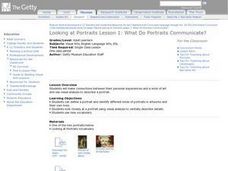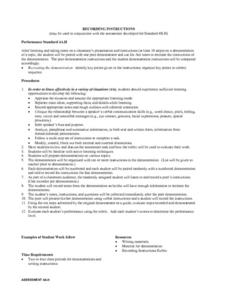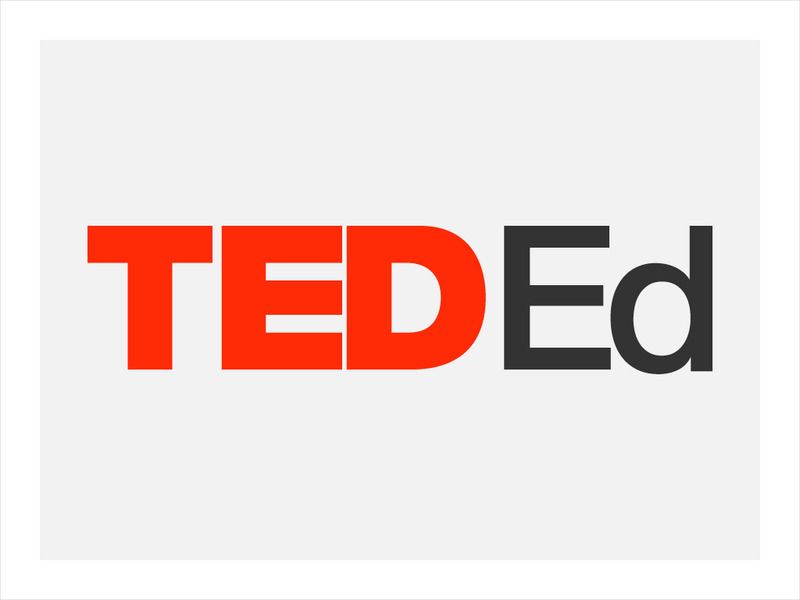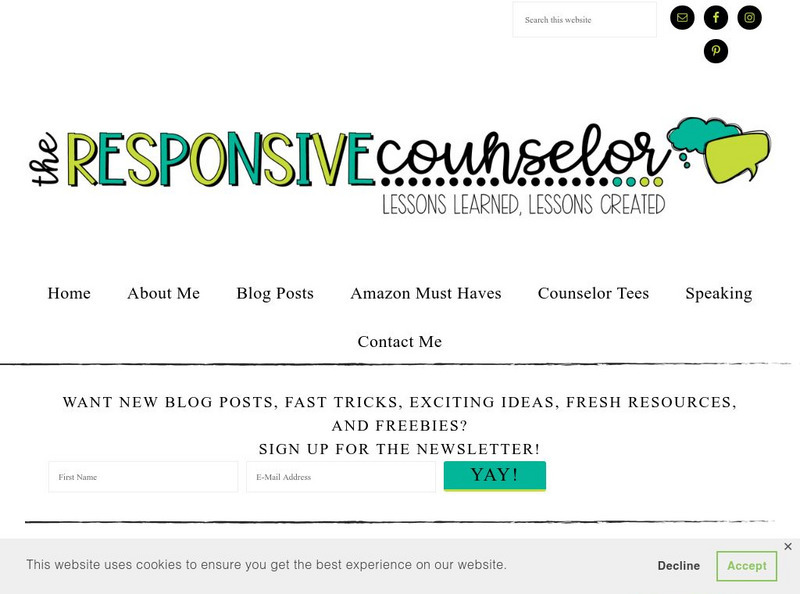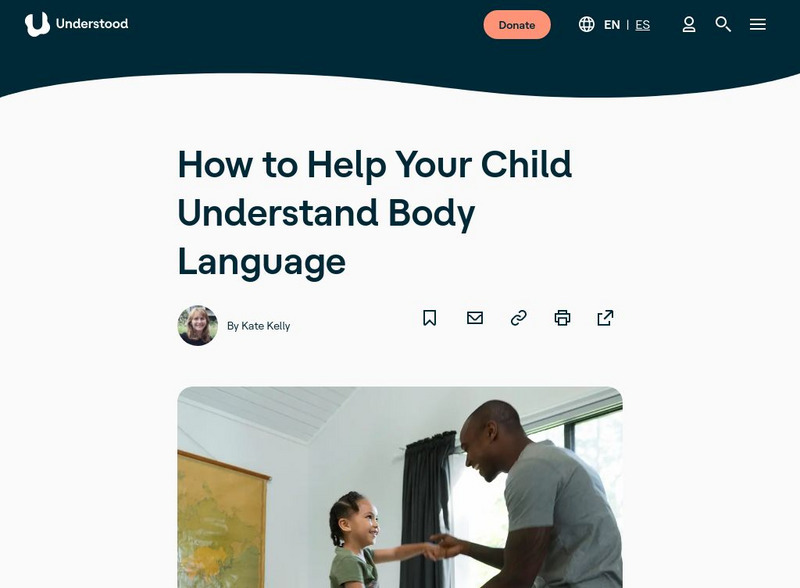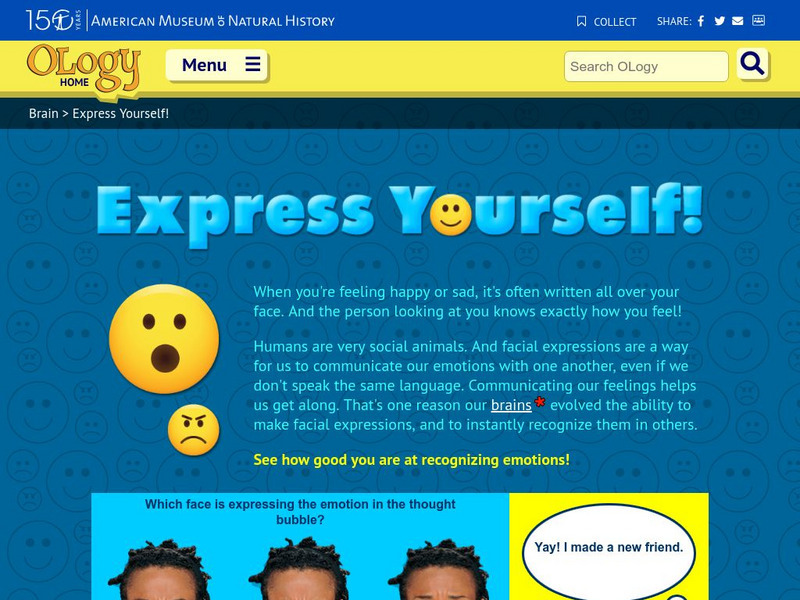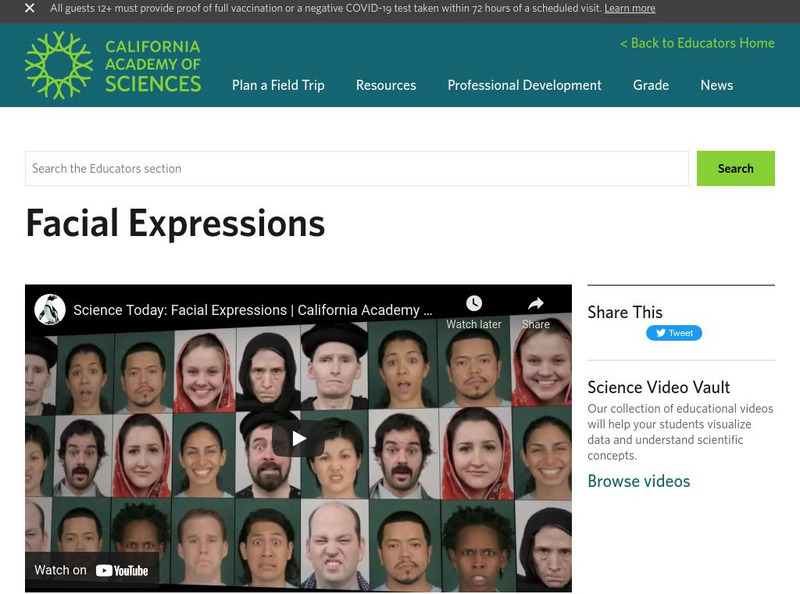Curated OER
Slang
For this ESL worksheet, students study words of slang in the English language. Students study 8 pictures and discuss the meanings in the terminology of each.
Curated OER
Extracts from History of Germany in the Nineteenth Century and Historical and Political Writings
In this World War II worksheet, learners read a 2-page selection from History of Germany in the Nineteenth Century and Historical and Political Writings by Heinrich Vot Treitschke and then respond to 4 short answer questions...
Curated OER
Family Communication Style
Eighth graders explore the different ways that families communicate with each other. After a lecture/demo, 8th graders generate a list of relationships that might benefit from practice in the art of conversation and communication.
Curated OER
What Do Portraits Communicate?
Students make connections between their personal experiences and portraits. define a portrait and identify different kinds of portraits in artworks and their own lives. They look closely at a portrait using visual analysis to describe...
Curated OER
Hostages
Pupils create interpretive drawings and movements based upon the emotion in the poem.
Curated OER
Mrs. Wishy Washy
Students explore the book, Mrs. Wishy Washy. They listen to the story, participate in a picture walk, identify the patterns of repeated words, role-play the motions, and retell the story using props.
Curated OER
Recording Instructions
Students listen to another's presentation and take notes. After that the student in is paired with another student to recreate the instructions of the demonstration. They will have to have proper notes recorded down and be able to...
Curated OER
A Cat Nap
First graders recognize the short vowel A in written and spoken language. Through matching activities, they discriminate the short vowel /a/ from other phonemes. Students associate the phoneme with its letter representation and read...
Curated OER
Itchy Iggy
First graders observe the letter /i/ and the sound that it makes watching their mouths as the sound is formed. They say the tongue twister displayed repeating it three times; the last time they stretch out the /i/ sound as it occurs in...
Curated OER
/e/ It Must be Old
First graders discover that written language is a secret code that may be broken if they learn to move their mouths in different ways when they say different letters. They compare the sound a creaky door makes to the /e/ sound. They try...
Curated OER
Mallard's Wet Olympics
Students investigate some of the different characteristics of living things. They make observations from reading and interactive media. Students observe that animals move in different ways and have adaptations to aid in that action.
Curated OER
Growing a Winter Garden
Second graders listen to a planting story as read by their teacher. Using the text, they summarize the events and complete a KWL chart. They point to the vegetable after it was planted in the garden in the story. They practice using new...
Curated OER
Theatre Lesson Plan
Second graders complete pantomime and improvisational theatre activities. In this theatre lesson, 2nd graders play a 'sound ball' game and recreate sounds as they toss the ball. Students discuss projection for an actor and practice the...
Curated OER
Integrated Social Studies and Storytelling Lesson
Fourth graders study the Civil War. They examine online photos that are connected to Indiana's role in the Civil War. They choose one of these photos and in a story circle, tell a story about it. They tell who is in the picture, what...
Other
Massey Univ.: Saying, Showing, Gesturing, and Feeling
This paper by John Shotter examines language development through Wittgenstein and Vygotsky. He contrasts the theories of language development from both of these psychologists.
TED Talks
Ted: Ted Ed: Your Body Language Shapes Who You Are
Social psychologist Amy Cuddy shows how power posing- standing in a posture of confidence, even when we don't feel confident- can affect testosterone and cortisol levels in the brain, and might even have an impact on our chances for...
Other
The Responsive Counselor: Body Language and Tone of Voice Lesson Plan
This blog post from shares several activities that will help students understand how to interpret voice tone and body language.
Understood For All
Understood: How to Help Your Child Understand Body Language
This article provides tips on how teach children to pick up on social cues.
American Museum of Natural History
American Museum of Natural History: Ology: Express Yourself
Test your skill at reading the emotion expressed in a face in these two matching games.
American Forum for Global Education
American Forum for Global Education: Talking With Our Hands
This lesson plan from the American Forum for Global Education is designed to help children understand that using hands to "convey messages" is a form of communication.
California Academy of Sciences
California Academy of Sciences: Facial Expressions
Are facial expressions learned or innate? [2:58]



